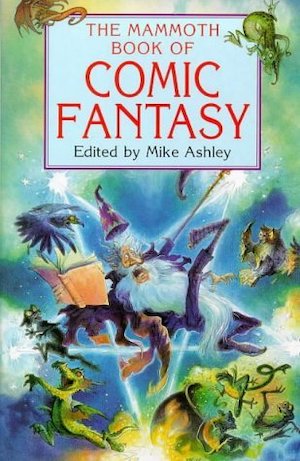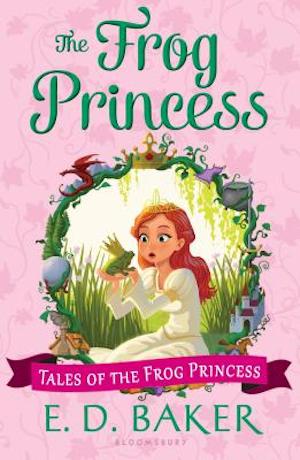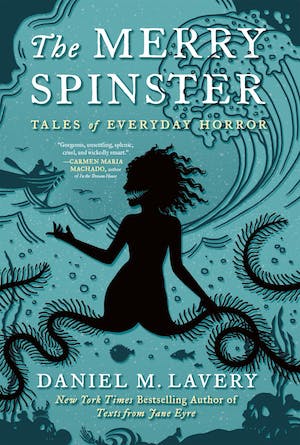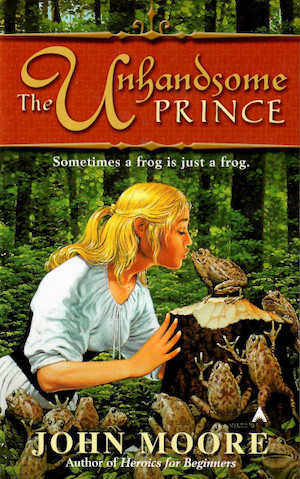“The Frog Prince” is a strange tale, bizarre and silly, not quite nonsense but definitely an odder entry in the animal bridegroom category. (Think the Green Serpent, the Black Bull of Norroway, Hans My Hedgehog, and yes, the Frog Prince—there’s a veritable bestiary of bridegrooms!) There’s always a reluctant bride/princess who, for one reason or another (often driven by her family’s insistence), comes around to returning the affections of her inhuman mate, who then turns out to be human after all—and usually royalty to boot.
In case you don’t know the story of our princely amphibian, here’s a quick and pond-scummy recap:
A lonely princess has a lovely golden ball. Is it real gold? Unclear, but it will sink in water, which will be relevant in a moment. She takes it to a glade or well or somewhere away from attendants, and plays with it for a while, until she drops it in the well or pond or whatever handy body of water is nearby. This causes her a great deal of distress, because she can’t retrieve the precious ball, and a frog notices her distress.
The frog offers to retrieve the golden ball, which opens up a myriad of questions. What kind of frog is it? How big is the ball? How heavy is the ball? How is the frog talking? You know, little things like that…
But the frog will only agree to retrieve the princess’ ball IF she takes him home to eat from her plate and to sleep in her bed like a beloved pet. The princess agrees to this breezily and the frog retrieves her ball. The princess takes her golden ball and takes off at a dead run, completely failing to uphold her end of the bargain and figuring the frog will forget all about it after a while.
How wrong she is! The frog shows up in the middle of dinner, and announces to everyone that she’s supposed to let him eat from her plate and sleep in her bed. The king asks his daughter if this is true, and while she might renege on her promises, she’s no liar, so she admits to the bargain. The king insists that she keep her word, so now she’s feeding a frog morsels from her own dinner. The king also insists on the bedroom arrangement, so that night she goes to bed with a frog.
Sometimes in (gentler?) versions of the story, the frog persuades the princess that he’s really a prince and she kisses him, breaking the spell. That’s fine, I suppose, but I prefer the versions where she gets fed up with the frog and throws him into the wall (not to endorse animal cruelty), but it does the trick and breaks the spell. The unfrogged prince marries the princess and they all live happily ever after.
At its best, “The Frog Prince” examines the promises we make and the reasons to keep them (or not). Girl makes promise, girl breaks promise, girl ends up keeping promise eventually, girl is rewarded with a prince. Pretty straightforward… or is it? Here are five versions that have tackled different aspects of this odd little tale…
“The Distressing Damsel” by David Langford, from The Mammoth Book of Comic Fantasy edited by Mike Ashley

Princess Fiona overhears her father’s plans to marry her off to whomever will bring the best fortune to his tiny and ill-fated kingdom, and while she’s pondering her wish to run away and become a beautiful and mysterious sorceress, she stumbles across a warty toad who begs her for the chance to restore himself to his former shape. After some trepidation, she agrees and smooches him, only to find that while he’s turned into a handsome frog, all of his toady warts have been transferred to her own soft skin. While this does buy her some time as her father sets her suitors to the new task of breaking this curse, she realizes that even if one of them succeeds, she won’t be the winner. With a little amphibian assistance, she does manage to find an unusual loophole for her circumstances, cutting her father’s plans short and finding a way to put her own dreams firmly at the center of her life.
The Frog Princess by E. D. Baker

When Princess Emerelda tries to kiss a frog to turn him back into a prince, the spell backfires and turns Emma into a frog herself, setting off a series of adventures as she and her froggy would-be suitor try to figure out how to return each other to human form. It does get her out of the awkward prospective engagement her mother was encouraging, but of course not in the way she had hoped. With a well-reasoned magical system and a fun fantasy world for kids or adults to dive into, this middle-grade retelling is short, light, and charming, and has, ahem, spawned a series of follow-up fairy tale books.
“The Frog Princess” from Feminist Fairy Tales by Barbara G. Walker

A lovely lady frog falls for a handsome prince who stops by her pond to fish and escape the attention of his courtiers and attendants. Although she realizes that it’s unlikely that he’ll return her affection, she journeys to see a fairy who offers her the opportunity to become a human maiden if she can get the prince to kiss her. The frog manages to arrange it during one of the prince’s pondside naps, and when he wakes he finds a maiden dressed all in green. As they chat, he discovers that she has a deep knowledge of the natural world he finds so much comfort in, and he brings her back to the palace where, despite her best efforts and their love for each other, she does not fit in. After a misshapen child dies shortly after birth, the court is in an uproar, and she asks him to take her back to the pond where they first met to spend one last day together. Evoking stories of Selkie or other animal brides, Walker allows that we can’t always change our nature, even for those we love.
“The Frog’s Princess” by Daniel M. Lavery, from The Merry Spinster

Lavery explores gender fluidity (reflected in the characters’ pronouns) and twists our expectations in this retelling, examining power dynamics, coercion, and the “unluckiness” of beauty along the way. The youngest daughter of a small family (the unluckiest of all) loses his golden bauble down a well, and haplessly agrees to a frog’s demand to be taken as companion if the frog rescues the golden ball. Overjoyed to have his toy back, the daughter runs home, ignoring the frog’s pleas to be taken along. Of course, a day later the frog reappears, and the father insists that his daughter keep his promises, lightly made though they were. Flinging the frog against the wall does nothing except make a slightly softer frog, and the beautiful daughter is stuck with his companion for we know not how long. More shivery than transformative, Lavery nevertheless manages to turn the tale sideways and find new facets of meaning.
The Unhandsome Prince by John Moore

Caroline was promised she’d get to wed a HANDSOME prince if she turned him from a frog back into a human, but Prince Hal is kinda… ehh, kinda cute? In the right light? It’s not good enough for Caroline, who spent weeks quartering off sections of the swamp to make sure she kissed every single frog. She demands compensation from the town council, but the witch who made the promise is dead, and only her daughter remains—and Emily doesn’t want to give up her estate for a mistake her mother made. So the maiden, the unhandsome prince, and the young witch set off to twist their fortunes into something better for all of them, in this not-exactly-retelling of “The Frog Prince” that borrows from a few other fairy tales along the way (and you know I love a good Rumpelstiltskin cameo!).
This story keeps away from the simple misunderstandings and cattiness between female characters that so often plague these kind of comedies, and offers a pure fun ride through the kingdom of Melinower; the three have to work together to save the day, and their solutions are both clever and entertaining. Tongue-in-cheek and self-aware, this re-imagining is perfect for when you’re looking for a fairy tale that’s entertaining and satisfying.
What are your favorite versions of the tale? Let me know in the comments!

